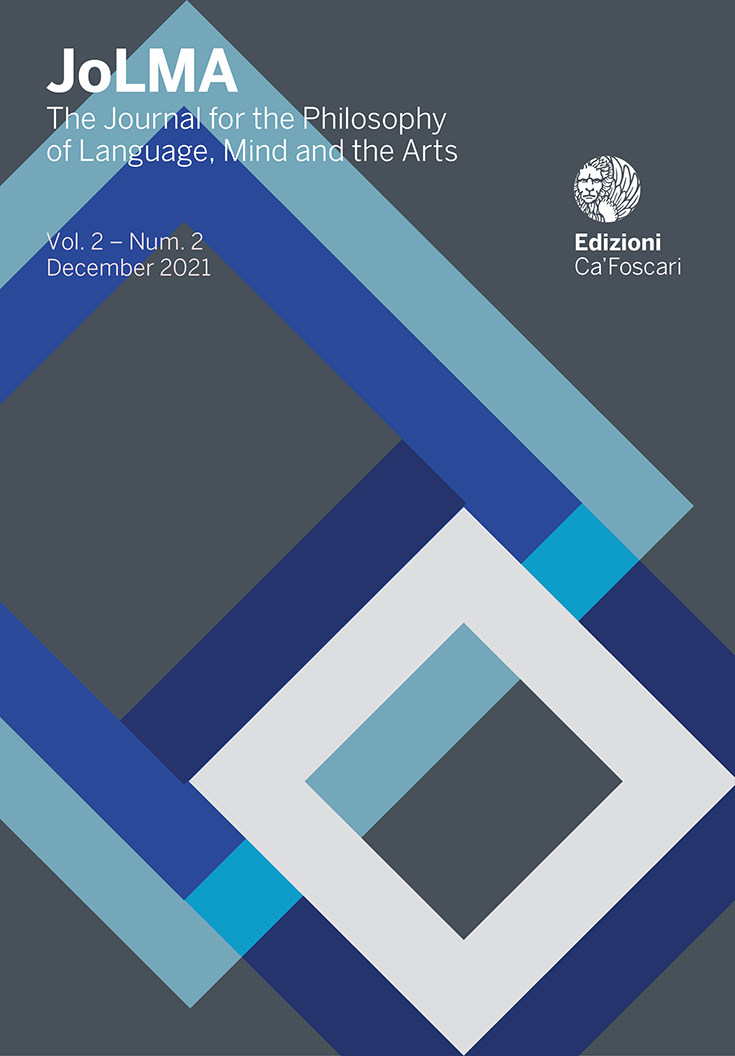Rivista |
JoLMA
Fascicolo monografico | 2 | 2 | 2021
Articolo | Prepositions and Spatial Relations in Natural Languages According to Leibniz
Prepositions and Spatial Relations in Natural Languages According to Leibniz
Abstract
In his 1677 Dialogue, Leibniz answers the question of how it is possible that speakers of different languages agree on the same truths by postulating “a certain correspondence between characters and things”. In the mid-1680s, he arguably attempts to specify this “correspondence” by explaining how linguistic particles are connected to our perception of spatial relations among things in the world. Firstly, this paper focuses on the role that, according to Leibniz, signs and characters play in our knowledge. Secondly, it introduces the solution that can be found in the Dialogue to the problem of how the same truth can be expressed in different languages. After briefly expounding Leibniz’s theory of natural languages, the paper gives an account of Leibniz’s analysis of the nature of prepositions and of how they contribute, in a natural language, to determine the correspondence between characters and things that is mentioned in the Dialogue.
Presentato: 12 Luglio 2021 | Accettato: 08 Ottobre 2021 | Pubblicato 15 Dicembre 2021 | Lingua: en
Keywords Spatial Relations • Knowledge • Prepositions • Leibniz • Natural Languages • Tropes
Copyright © 2021 Massimo Mugnai. This is an open-access work distributed under the terms of the Creative Commons Attribution License (CC BY). The use, distribution or reproduction is permitted, provided that the original author(s) and the copyright owner(s) are credited and that the original publication is cited, in accordance with accepted academic practice. The license allows for commercial use. No use, distribution or reproduction is permitted which does not comply with these terms.
Permalink http://doi.org/10.30687/Jolma/2723-9640/2021/02/005





